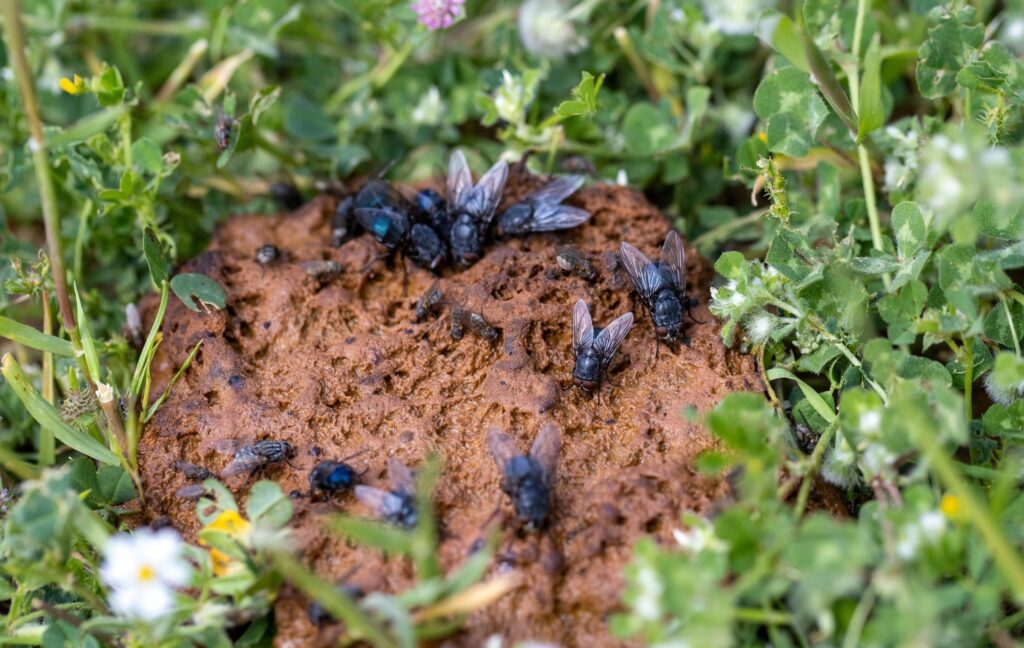
In a groundbreaking study published in the journal npj Biofilms and Microbiomes, researchers have uncovered that manure-feeding flies on dairy farms may act as silent super-spreaders of zoonotic pathogens and antimicrobial resistance genes (ARGs). These findings highlight the potential role of these insects in transferring and amplifying resistant pathogens from livestock waste into the farm environment.
The study focused on coprophagous muscid flies, specifically Neomyia cornicina, and their ability to acquire and spread zoonotic pathogens and ARGs from cow manure. This revelation adds a new dimension to understanding how infectious diseases may spread from animals to humans, particularly in agricultural settings.
Background: The Role of Dairy Farms in Disease Emergence
Over 60% of emerging infectious diseases (EID) originate from animals, with dairy farms serving as potential breeding grounds for zoonotic bacteria such as Escherichia coli (E. coli), Salmonella enterica, and Coxiella burnetii. These bacteria often carry ARGs, which pose significant health risks. The flies, which feed and breed in cow manure, may ingest and subsequently spread these pathogens.
While previous culture-based studies have identified pathogens in flies, they have struggled to trace genomic similarities across different environments. However, the use of shotgun metagenomic sequencing in this study allowed researchers to directly analyze shared genes between flies and manure, offering a clearer picture of potential transmission pathways.
About the Study: Methodology and Findings
The research team collected 29 adult muscid flies from a dairy farm in Saint-Genès-Champanelle, France. These flies were captured while feeding on or hovering above freshly deposited manure. The flies’ gastrointestinal tracts (GITs) were dissected for DNA extraction and sequencing.
Parallel data were gathered from 48 cow manure samples. Metagenomic reads were processed and assembled into contigs, with high-quality metagenome-assembled genomes (MAGs) created and taxonomically classified. The study confirmed Neomyia cornicina as the primary fly species through mitochondrial cytochrome oxidase subunit I (COI) gene analysis.
Comparative analysis revealed significant genetic overlap between MAGs from flies and manure, particularly for bacteria like Fibrobacter. The study identified shared microbial flows, with 34 of the 50 most abundant MAGs present in both flies and manure, suggesting a shared microbial ecosystem.
Key Findings and Implications
The study found that pathogens with specialized secretion systems, such as E. coli’s T3SS, were enriched in flies, indicating these tools may help bacteria survive or colonize the insect gut. Metagenomic sequencing of the fly GITs generated over 3.5 billion reads, resulting in 506 MAGs, with 42 meeting high-quality standards across 15 bacterial genera.
Functional genomic features, including ARGs and virulence factors (VFs), were mapped, revealing significant overlap between flies and manure. Importantly, many shared MAGs encoded complete pathways for amino acid and carbohydrate metabolism, suggesting ecological adaptability.
“The presence of these pathogens in flies poses a significant risk for disease transmission to humans, especially farm workers,” the study noted.
Conclusions and Future Directions
This study provides robust genomic evidence that Neomyia flies act as vectors for zoonotic pathogens and ARGs on dairy farms. By tracing microbial flow from cow manure to the fly GIT, researchers identified shared VFs, ARGs, and complete pathogen genomes. These findings suggest that flies may not only transport pathogens but also facilitate their proliferation.
The results underscore the need for integrated pest and hygiene management in agricultural settings to minimize public health risks. However, the study’s authors emphasize that multi-farm and longitudinal studies are necessary to validate these findings and develop effective mitigation strategies.
As agricultural practices continue to evolve, understanding the hidden roles of insects like flies in disease transmission becomes increasingly important. This study opens new avenues for research and highlights the interconnectedness of ecosystems in the spread of infectious diseases.






